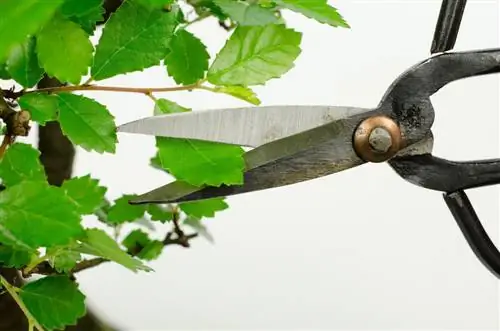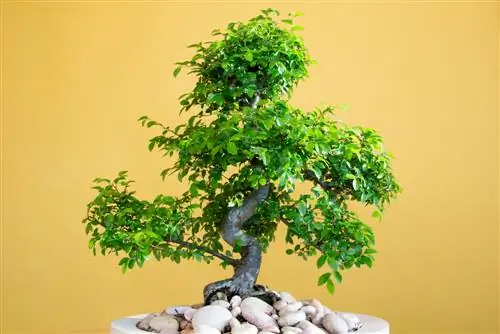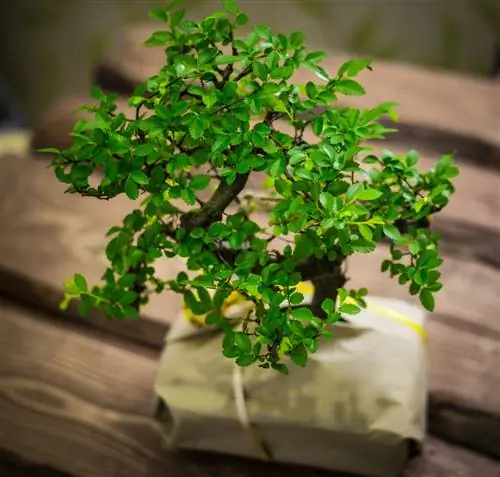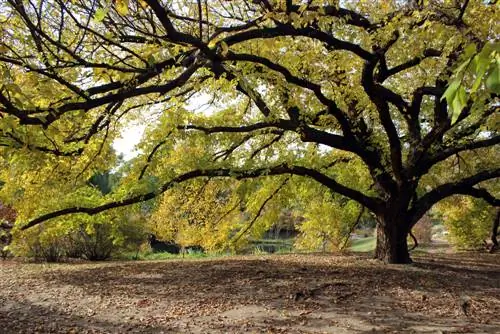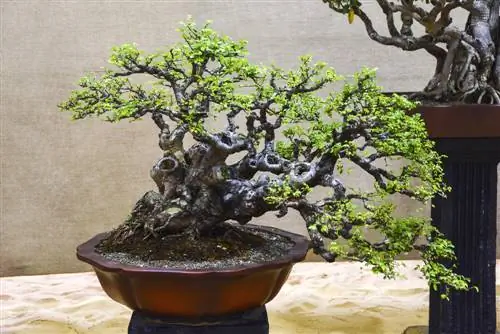- Author admin [email protected].
- Public 2023-12-16 16:46.
- Last modified 2025-01-23 11:21.
Chinese elms have beautiful growth when well cared for. Pruning is only necessary to a limited extent. It is different with the Japanese art of bonsai, which is discussed in more detail in this article. The low growth height is an attractive and easy-care way to keep a Chinese elm. Find out a lot of useful information here for the correct pruning of a Chinese elm as a bonsai.
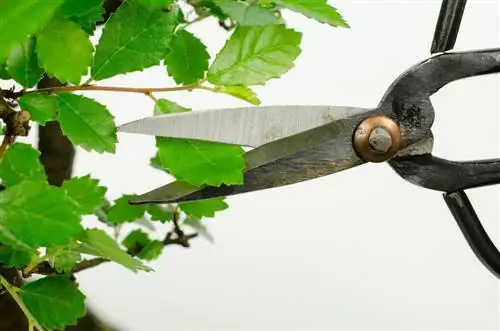
How to properly prune a Chinese elm?
To properly prune a Chinese elm, shorten the branches to 1-2 leaves in the fall and remove thick branches. The crown should be thinned out and the roots shortened every one to two years, especially in young plants.
The basic cut
The Chinese elm is not damaged by severe pruning. On the contrary, a radical cut promotes the formation of new shoots and leads to dense branches. To do this, let the branches grow to a length of 10 cm and it is best to shorten them to 1-2 leaves in autumn. You can also use a shaping wire (€16.00 on Amazon) to help. If you use the correct cutting technique, this is usually not necessary.
Suitable styles
The Chinese elm is ideal for bonsai cultivation. This means that no design type is excluded. You can let your imagination run wild. The deciduous tree has become particularly established
- the broom shape
- the free upright form
- and the rock shape
Time intervals between pruning
You should cut particularly thick branches in autumn to prevent too much sap from escaping. Thinning out the crown every one to two years is sufficient. Here too, young shoots are cut back to one or two leaves. You should still trim regularly to maintain shape. This is especially true for older trees. Young plants, on the other hand, must be constantly pruned so that they form dense branches.
Short the root
Chinese elms are known for their strong and rapid root formation. Young plants should therefore be repotted every two years. A good time for this is the time shortly before budding. During this process, it is recommended to shorten the roots at the same time.

